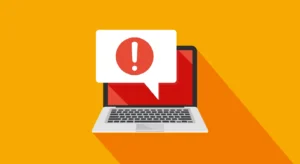If your success depends on individuals outside your organization following the same AP process, it can be nearly impossible. If these individuals outside your organization are asking the question, “What’s in it for me to change the way I do things?” and the answer does not outweigh the time, money, opportunity, and hassle of making the changes you are asking them to make to do things your way, then your success is doomed.
This has always been the problem with the technologies who tout themselves as the ultimate solution for AP Automation. Your chances of getting 100% compliance from those you are paying are very slim. And while anything less than 100% compliance helps the problem, it does not totally solve it.
What is Paperless Accounts Payable?
Every business wants to ensure vendors are paid on time and take advantage of early payment discounts, but traditional paperwork and manual processes often stand in the way. Working in various systems, like Excel and over email, makes losing invoices, missing payments, or delaying reports more likely, potentially threatening vendor relationships.
Adhering to a paperless accounts payable system means you follow a completely digital accounts payable process, so you no longer need paper invoices. Leveraging the right technology, your accounts payable department can digitize invoices and related documents, automate the approval process, and conduct payments electronically. Overall, the goal is to eliminate manual steps, reduce the risk of errors, and increase your company’s speed and efficiency, preferably within one software solution.
The paperless accounts payable process can be a total game-changer for organizations, helping manage more invoices without adding additional staff or expecting more of existing staff. Plus, it creates a standardized workflow that creates more efficiency over time.
The Problem with Inconsistent Intake Processes
The problem, as you probably know, begins with the intake process. Invoices and supporting documents are submitted in a variety of ways. Some may be sent in through EDI or retrieved directly by your AP department. Some come in through email, and those usually end up getting printed, sometimes in multiple copies before they are paid. And some will come in on paper and will probably be copied before being passed along to an approver.
Inside of those transmissions, there is also a lack of consistency. One email might have multiple attachments each containing a single invoice, while another email might have one attachment that includes multiple invoices. Meaning there is no standardization of how the documents arrive to you. It also means every piece of information received is a manual process involving a high level of decision-making on the part of your AP staff.
The Impact of Paperless Accounts Payable in Vendor Relationships
Traditional accounts payable processes can make managing vendor relationships a challenge. Late payments, lost invoices, and miscommunication strain vendor relationships, not to mention the difficulties in keeping track of each supplier’s terms and preferences.
Paperless accounts payable systems simplify the process. Payments are made on time with faster processing and invoice approval, boosting vendor satisfaction. It’s also much easier to access and manage vendor information when it’s stored in one central location.
These systems also open the possibility of using automated supplier portals where vendors can submit invoices, track payment status, and communicate with you to reduce back-and-forth emails or phone calls. In the event there are any delays or discrepancies, automatic notifications, alerts, and reminders can be sent to both parties for full transparency that reduces misunderstanding.
Various payment terms, discounts, and other supplier preferences can be managed seamlessly using a paperless accounts payable solution. You can ensure compliance with vendor requirements and take advantage of incentives like early payment discounts to optimize cash flow and strengthen supplier relationships.
EDI And Supplier Networks: No Longer an Adequate Intake Solution
In the past, industry experts said that EDI was going to create the standardization necessary to solve the intake process problem. In short, it did not. EDI required your vendors to invest in technology which had to be set up, configured, and maintained at both ends of the transaction. It required each vendor to change their process, which meant training, learning curves, and lost productivity. For many vendors, the ROI was just not there, and they did not buy into it.
Then supplier networks were introduced to solve the problem. But that is not getting total compliance either. Surveys report that even the most successful companies using a supplier network are still processing at least 25 percent of their invoices manually.
Your vendors who have not set up an EDI system or jumped on board the supplier network train are not just being difficult. They are just like any other business; basically, they want to sell stuff, they want to get paid, and they want to have a profit margin. If you are asking them to make changes that are not cost-effective for them, you are cutting into their profit margin, and they must weigh it against the possibility of not selling to you or waiting a little longer to get paid.
Why Vendors Choose Not to Join a Supplier Network
Vendors who are not likely to see the benefit from joining a supplier network tend to fall into one of three categories – too small to afford a change, too big to need to change, or they are the single source for what you need.
Too small to afford a change:
If you are doing business with small “Mom and Pop” suppliers, you need to remember they send comparatively few invoices, and it is practically free for them to email you or even print and mail your invoices. They are too small to get a return on technology, so unless you are by far their largest customer, you probably do not offer an incentive that makes compliance reasonable for them.
Too big to need to change:
At the other extreme are the large vendors who command huge market share and offer the best pricing. If you want to buy from them, you must comply with them, not the other way around. And it may not be cost-effective for you to change vendors.
Single source for what you need:
Lastly, there are the industry-specific suppliers. Raw material vendors, for instance, have a virtual corner on the product they supply, and they are not likely to respond to any incentive or threat which requires an investment on their part.
Regardless of their reason for not complying, you are purchasing from each of your selected vendors for a reason. Perhaps they are the only game in town, their pricing is the best available, or you have a trusted relationship based on quality and service. In any case, your purchasers have chosen this vendor. Is that a relationship AP can sacrifice? And do you really want to force your vendors into an arrangement that is costly and unfavorable for them?
The Solution: Going Paperless with AP Automation by DataServ
In reality, asking 100 percent of your vendors to comply with any system you choose, is not a reasonable ask. But if you choose the right AP partner, this process is virtually seamless to your vendors and can actually give them more insight into invoice and payment status within your paperless AP tool through a vendor portal.
You want to partner with AP experts on the automation and the intake process either for all your invoices or the “leftovers” that are not compliant with your existing solution. Creating document standardization, a 100% digital single stream solution for your accounts payable department built on a SaaS OCR-intake approach, delivering clean and usable data – all while ensuring over 99% pre-ERP accuracy. Sounds like a good solution, doesn’t it?
Implement this solution easily with the help of DataServ. Our experienced team will help you throughout the entire process, from implementation to kick-off and beyond. To learn more about how we can help your business, contact us or schedule a demo online today.







